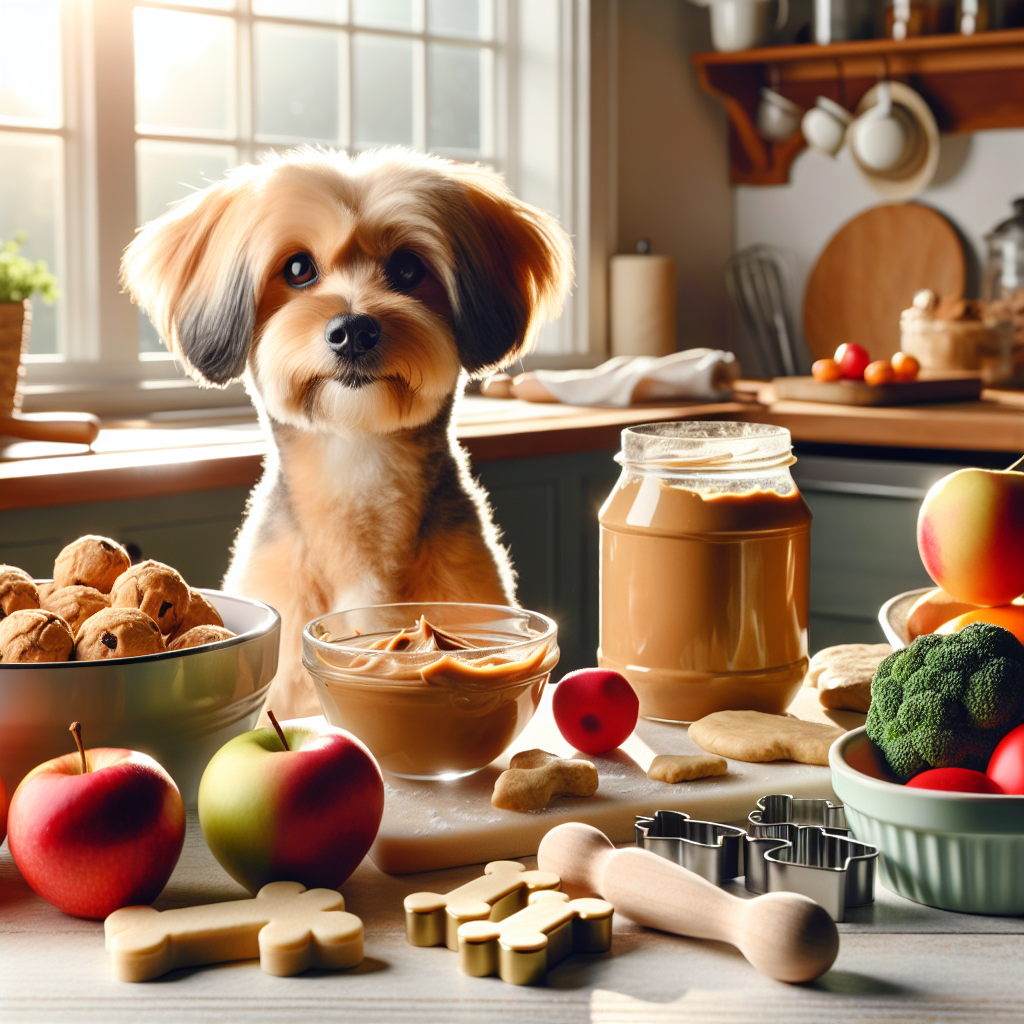How to Keep Homemade Dog Treats from Molding: Top Tips
Creating homemade dog treats can be a rewarding experience for both you and your furry friend. Not only do you have full control over the ingredients that go into each treat, ensuring they are as healthy and nutritious as possible, but you also get to cater to your dog's specific tastes and dietary needs. However, one common concern that many pet owners face is how to keep homemade dog treats from molding. Unlike commercial treats, homemade versions often lack preservatives, making them more susceptible to mold if not stored properly.
To start off, it's crucial to understand the ingredients and their shelf lives. Natural and organic ingredients, while healthier, tend to have shorter lifespans. Knowing how to balance these components can help you create treats that last longer. Additionally, baking or dehydrating treats thoroughly can significantly reduce their moisture content, which is a key factor in mold growth.
Stay tuned as we delve deeper into effective storage methods, ingredient selection, and other valuable tips to ensure your homemade dog treats remain fresh and mold-free for as long as possible. Treat your furry friend to the joy they deserve with our range of delicious and nutritious dog treats.
Understanding Why Treats Mold
Before delving into the methods to prevent mold, it's essential to understand why treats mold in the first place. Mold is a type of fungus that thrives in environments with the right combination of moisture, warmth, and organic material. Homemade dog treats, often made with fresh and natural ingredients, provide an ideal breeding ground for mold if not handled properly.
There are several factors that contribute to mold growth:
- Moisture: One of the primary catalysts for mold growth is moisture. Whether it's residual water from the ingredients or humidity in the air, moisture can quickly lead to mold formation.
- Temperature: Warm environments accelerate mold growth. Storing treats in a cool, dry place can significantly slow down this process.
- Ingredients: Natural and perishable ingredients like fruits, vegetables, and meats have shorter shelf lives and are more prone to spoilage compared to processed ingredients.
- Contamination: Handling treats with unclean hands or utensils can introduce mold spores, which then thrive on the treats.
By understanding these factors, you can take proactive steps to mitigate the risk. For instance, ensuring your treats are thoroughly dried, stored in airtight containers, and kept in a cool, dry place can make a significant difference in their longevity. In the following sections, we will explore practical tips and strategies to keep your homemade dog treats fresh and mold-free.
Proper Storage Techniques for Treats

Proper storage is crucial when it comes to extending the shelf life of your homemade dog treats and preventing mold. Here are some essential techniques to ensure your treats remain fresh and safe for your furry friend:
- Airtight Containers: One of the most effective ways to store treats is in airtight containers. These containers prevent moisture from entering and maintain a stable environment for the treats. Glass jars with sealed lids or high-quality plastic containers are excellent choices.
- Cool, Dry Place: Store the treats in a cool and dry location. Avoid areas in your home that are prone to humidity, such as the kitchen or bathroom. A pantry or cupboard away from heat sources is ideal.
- Refrigeration: For treats with high moisture content or those made with fresh ingredients, consider refrigeration. While this may slightly alter the texture, it significantly reduces the risk of mold. Ensure the treats are in an airtight container to prevent them from absorbing other odors from the fridge.
- Freezing: If you’ve made a large batch of treats, freezing them can be a great option. Divide the treats into portions and store them in freezer-safe bags or containers. This method preserves the treats for several months. When you’re ready to use them, simply thaw the desired portion at room temperature.
- Desiccants: Including food-safe desiccants in the storage container can help absorb any residual moisture. These are especially useful if you live in a humid climate.
Implementing these storage techniques can greatly extend the shelf-life of your homemade dog treats, ensuring they remain delicious and nutritious for your pet. In the next section, we'll discuss the importance of using the right ingredients to further prevent mold growth.
Using Natural Preservatives

One of the best ways to keep homemade dog treats fresh and mold-free is by incorporating natural preservatives. These ingredients not only extend the shelf life of the treats but also add nutritional benefits. Here are some natural preservatives you can use:
- Vitamin E: Known for its antioxidant properties, Vitamin E helps in preventing the oxidation of fats, which can lead to spoilage. You can find Vitamin E in natural sources like wheat germ oil, sunflower seeds, and spinach.
- Rosemary Extract: This powerful herb works as a natural preservative and has antimicrobial properties. Adding a small amount of rosemary extract to your recipe can help keep mold at bay while also providing a pleasant aroma.
- Citrus Fruits: Lemon juice and orange peel contain citric acid, which acts as a natural preservative. They can be added in small quantities to your treat recipes to help extend their freshness. Be sure to avoid any seeds or excessive amounts, as they can be harmful to dogs.
- Honey: This natural sweetener has antimicrobial properties that can help inhibit mold growth. Honey also adds a touch of sweetness that most dogs find irresistible. Use it sparingly to avoid adding too many extra calories to your dog’s diet.
- Vinegar: Apple cider vinegar is another excellent natural preservative. It helps in maintaining the pH balance and can prevent the growth of mold. A small amount can be added to the dough or batter of the treats.
By incorporating these natural preservatives into your homemade dog treat recipes, you can ensure that your furry friend enjoys fresh, healthy snacks for a longer period. In the next section, we'll explore the importance of baking and drying methods in maintaining the quality of your treats.
Making Treats with Low Moisture

Creating dog treats with low moisture content is a crucial step in preventing mold growth. Mold thrives in moist environments, so reducing the water content in your treats can significantly extend their shelf life. Here are some effective strategies to achieve low moisture in your homemade dog treats:
- Baking: One of the simplest methods to reduce moisture is by baking the treats at a low temperature for a longer period. This allows the moisture to evaporate gradually, resulting in a drier product. Aim for a temperature around 200°F (93°C) and bake until the treats are firm and dry.
- Dehydrating: Using a food dehydrator is an excellent way to remove moisture from dog treats. This method ensures even drying and can be particularly useful for treats made from meat or fruits. Set your dehydrator to the appropriate temperature for the ingredients and let it run until the treats are completely dry.
- Ingredients: Choose ingredients that naturally have low moisture content. For example, flours like oat flour or coconut flour absorb more moisture than all-purpose flour. Similarly, using lean meats and dehydrated fruits can help reduce the overall moisture in the treats.
- Storage: After baking or dehydrating your treats, allow them to cool completely before storing them. Store the treats in airtight containers in a cool, dry place to maintain their low moisture content. Adding a silica gel packet to the container can also help absorb any remaining moisture.
By focusing on creating low-moisture dog treats, you can significantly reduce the risk of mold growth, ensuring that your homemade snacks remain fresh and safe for your furry friend. In the next section, we will discuss tips for proper packaging and storage to further extend the shelf life of your treats.
Regularly Checking for Freshness

Even with all precautions in place, it is essential to regularly check your homemade dog treats for freshness. This proactive approach helps ensure that your furry friend is always enjoying safe and delicious snacks. Here are some tips to help you stay on top of your treat's freshness:
- Visual Inspection: Frequently examine your dog treats for any visible signs of mold or spoilage. Look for changes in color, texture, or the appearance of spots that might indicate mold growth. If you notice any of these signs, it's best to discard the affected treats immediately.
- Smell Test: Trust your nose! Give the treats a quick sniff to check for any off or sour odors. Fresh treats should smell pleasant or neutral, depending on the ingredients used. An unusual or foul smell is a clear indication that the treats have gone bad.
- Touch Test: Feel the texture of the treats. If they start to feel soft, sticky, or excessively hard (depending on their original texture), they might be starting to spoil. Consistency changes can be a sign of mold growth or stale treats.
- Labeling: When you make a batch of homemade treats, label them with the preparation date. This practice helps you keep track of how long the treats have been stored and can guide you on when it's time to make a fresh batch.
By incorporating these simple checks into your routine, you can ensure that your dog is always enjoying the freshest and safest treats possible. Remember, maintaining freshness is just as important as the initial preparation to prevent mold and spoilage.
Looking for more ways to spoil your furry friend? Treat your furry friend to the joy they deserve with our range of delicious and nutritious dog treats.






